Curious about Topic Clusters?
You might be wondering if Topic Clusters could help boost the traffic to your SaaS, promote your key features, and increase conversion.
Spoiler alert: Topic Clusters are a great content strategy for SaaS and B2B products or companies.
In this complete guide, I will show you step-by-step how to create a topic cluster for your SaaS.
This guide will be very practical; I will share:
- 7 steps to help you create your first topic cluster for your SaaS.
- 8 tips to help you start with this SEO content strategy.
- And many examples throughout the content.
Don’t miss the most complete guide about creating a topic cluster for SaaS.
Scroll down and start reading.
Table of Contents
Understanding the Power of Topic Clusters in SaaS Marketing
If you’re here looking to create a topic cluster for your SaaS, we’ll assume you already know what a topic cluster is.
But let’s quickly recap to ensure we’re all on the same page and understand what we’re about to create.
A topic cluster is an SEO strategy that structures content around a main subject. Ultimately, you’ll create a set of content pieces that completely cover the main topic.
A topic cluster also provides a way to organize the information on your website.
Here are the main components of a topic cluster:
- The Pillar Page: This is the central page of the topic cluster, introducing the topic and listing all the cluster pages.
- The Cluster Pages: Also referred to as subpages, each page covers a specific aspect of the main topic.
- Internal Linking: Linking pages together is a crucial element of a topic cluster, as it strengthens the information structure and helps users navigate from one page to another.
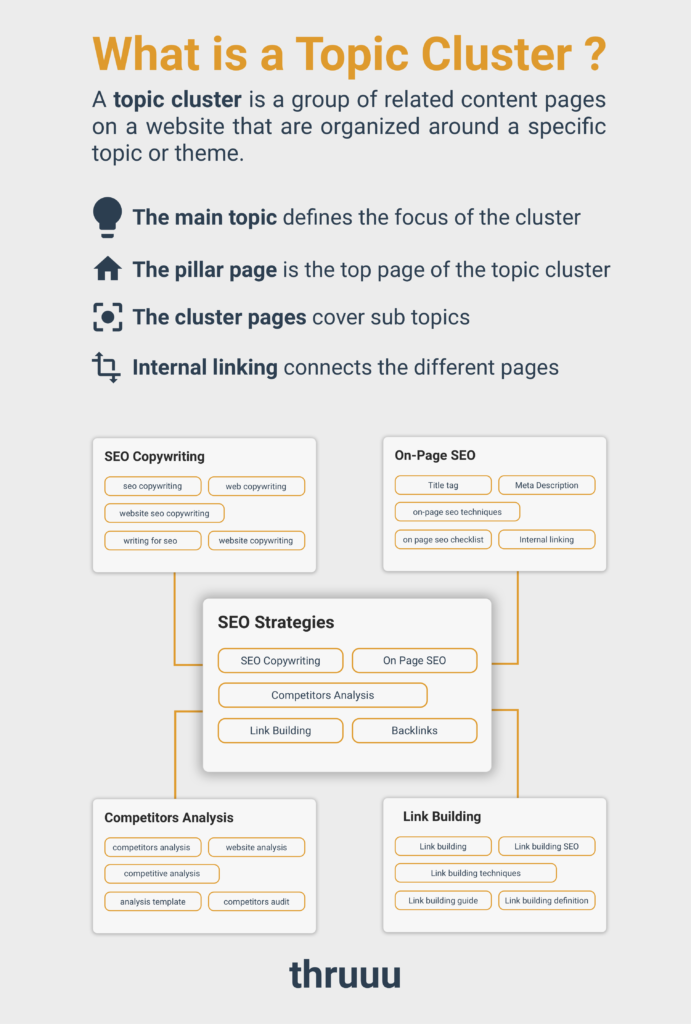
In SaaS marketing, particularly in B2B marketing, it is essential to be visible at every step of the customer journey.
Your buyers often have long sales cycles, making it crucial that your content nurtures them along the marketing funnel.
Topic clusters can help you achieve this by creating content tailored to each step of the marketing funnel.
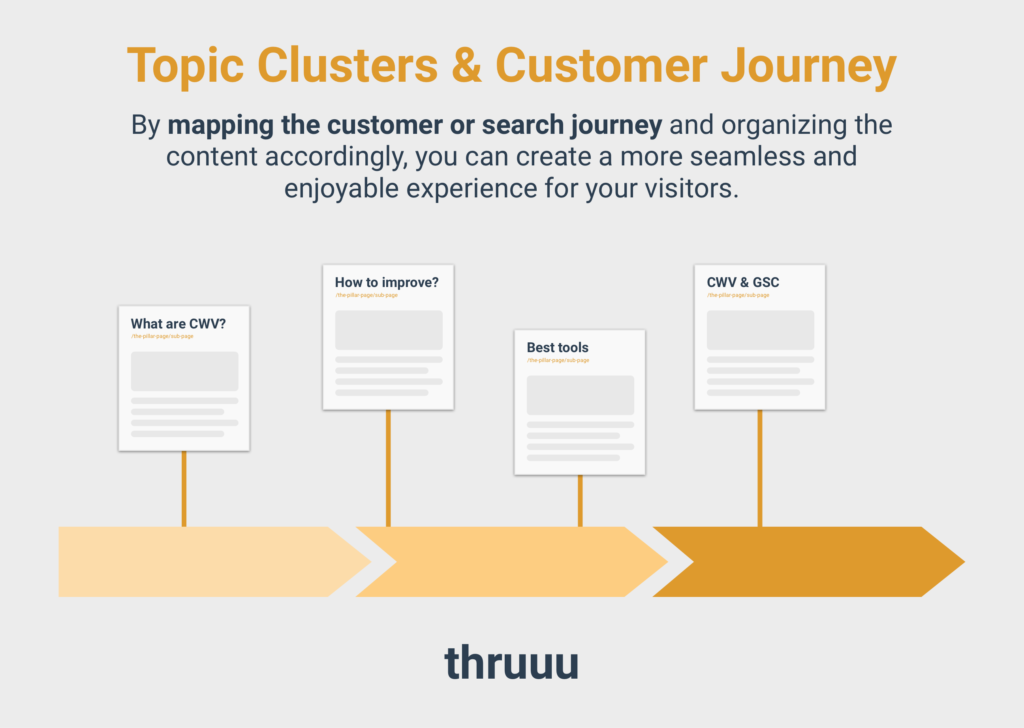
We will cover this in the steps to create a topic cluster for your SaaS.
Step 1: Identifying Core Topics Related to Your SaaS Value Proposition and Key Features
Your SaaS has a unique value proposition and key features that will likely support your target audience with their day-to-day task.
Your goal?
Being found by this target audience.
How?
Creating content that drives this audience to your key features and explains your value proposition.
In step 1, your aim is to identify core topics related to your main features.
For example, at thruuu, we created a topic cluster around the “topic cluster content strategy.“
Our strategy is to promote our keyword clustering and topic cluster tool by creating an extensive set of articles related this to core topic.
Why?
We believe that businesses interested in this SEO strategy might consider using an SEO tool like ours.
So, here’s the point.
Start by listing your main features and define the main topic related to each feature.
For instance:
| SaaS Feature | Related Main Topic |
| Project Management Dashboard | Agile Project Management |
| Customer Relationship Management (CRM) | Sales and Marketing Automation |
| Financial Analytics Dashboard | Business Intelligence and Data Visualization |
| Learning Management System (LMS) | Online Education and E-Learning |
| Human Resources Information System (HRIS) | Talent Management and Employee Engagement |
| Lead enrichment | Data Enhancement and Customer Profiling |
| IT Ticketing Tool | IT Service and Incident Management |
| Keyword Clustering Tool | Topic Cluster Content Strategy |
Be aware that your core topic could be highly competitive.
However, this is precisely the point of a topic cluster: to build content and topical authority around a central theme.
Your company must be recognized as a trusted source of knowledge by your audience and search engines.
So, did you pick a key feature of your SaaS and define a core topic?
Let’s move to step 2.
Step 2: Conducting Keyword Research, Identifying Audience Pain Points, and Performing Competitive Analysis
Now that you’ve selected a core topic, start identifying every keywords, questions, and queries associated with that topic and its related product features.
The goal of step 2 is to compile a comprehensive list of keywords.
To create this extensive keyword list, you can adopt various approaches and combine them:
Do Keyword Research
Use your preferred keyword research tool to look for keywords related to your main features.
At thruuu, we shared our SEO B2B stack in a previous article. We primarily use Google Search Console to gather keywords.
If you’re looking for a tip, consider filtering all keywords related to a product feature page.
- Open Google Search Console (GSC)
- Go to Search Performance
- Filter based on the URL of a feature page.
Voilà, you can now access over 1000 keywords and search queries that no other keyword tool can provide.
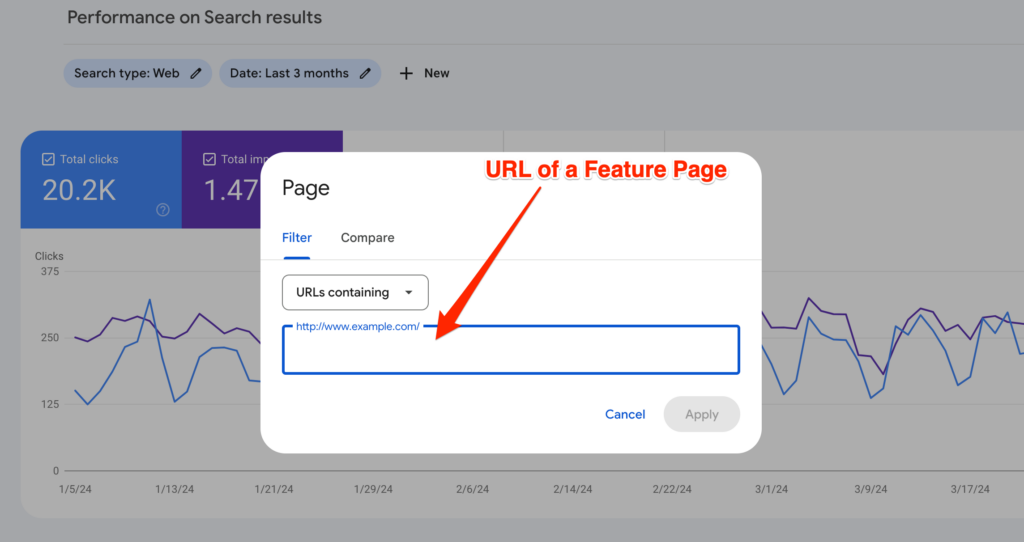
Gather Audience Pain Points and Frequent Questions
List your audience’s main pain points, which might have been identified through user research, and incorporate these findings into your keyword list.
It’s also crucial to list the main questions your audience may have.
There are many ways to gather user feedback, such as speaking with your sales team or customer success managers or extracting data from Google Searches, especially the PAA (People Also Ask) box.
With thruuu, you can analyze any Google SERP, extract questions from the SERP, and search results page.
Enter a dozen keywords into thruuu, and you’ll quickly build a list of 100 questions in a few minutes.
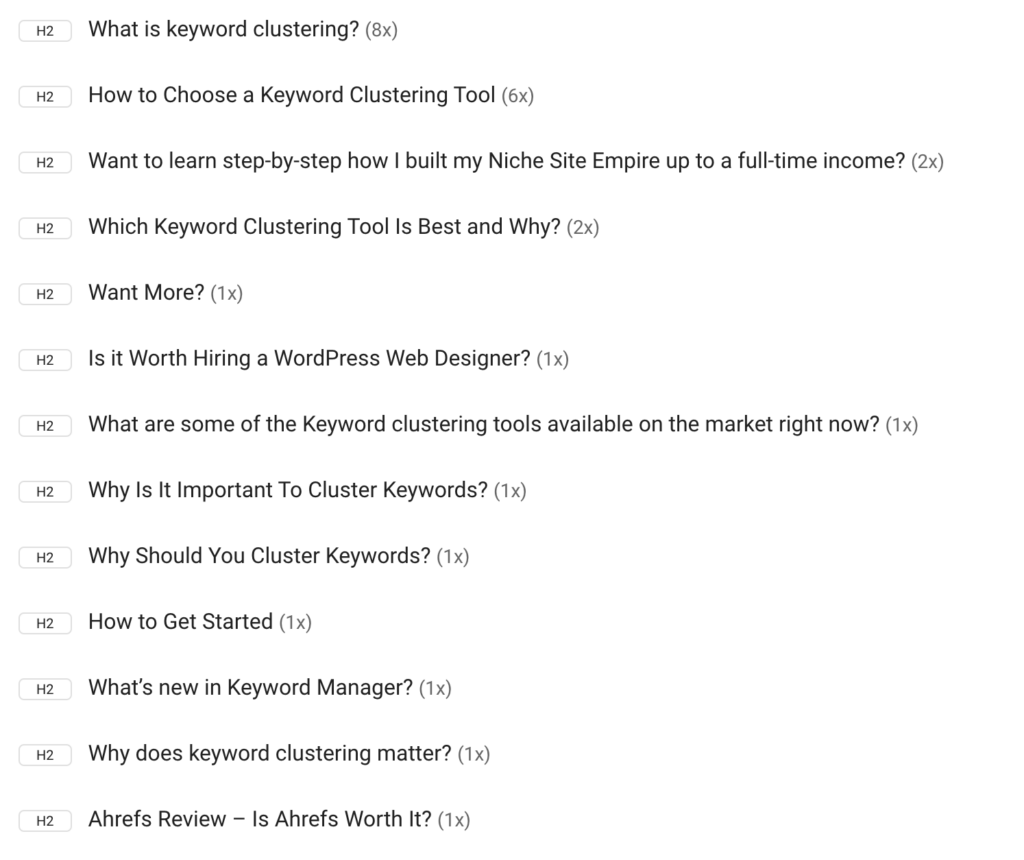
Analyze Your Competitors
You’ve likely already conducted some competitor analysis.
With your keyword tool, you can get a list of keywords related to your competitor’s website or browse their blog or social media profiles for keyword ideas.
This step should be straightforward, as you’re used to building a list of keywords.
And now, you have a long list of keywords related to your main topic.
🔥 Must Try: Generate Thousands of Keywords From A Product Feature Page
Do you want to discover a great technique to create a (very) long list of keywords related to your product?
In the following article, I share an approach that takes the text of your product page and generates thousands of keywords, including the questions asked by your audience and related searches.
➡️ Open in a new tab: Create an SEO Content Plan with PAA and Related Searches
Step 3: Grouping Keywords into Clusters
Grouping keywords into clusters is a crucial step in creating a topic cluster.
While you could start by manually grouping keywords with similar meanings, we advise against this approach for two reasons: first, it is time-consuming, and second, this method doesn’t deliver the best results.
Our recommendation is to group keywords based on their SERP Similarity.
This means that when two keywords display many identical web pages on Google’s first page, you should group them.
Why?
When two different phrases or keywords lead to the same search result page, it indicates that the user search intent behind both queries is similar.
In this case, there’s no need to create separate articles for each keyword.
With the thruuu keywords clustering tool, you can speed up and scale this process.
Enter your list of keywords into our tool. The tool automatically groups them into clusters of similar keywords, giving you a view like the one below.
As illustrated, the tool efficiently groups keywords into clusters based on similarity.
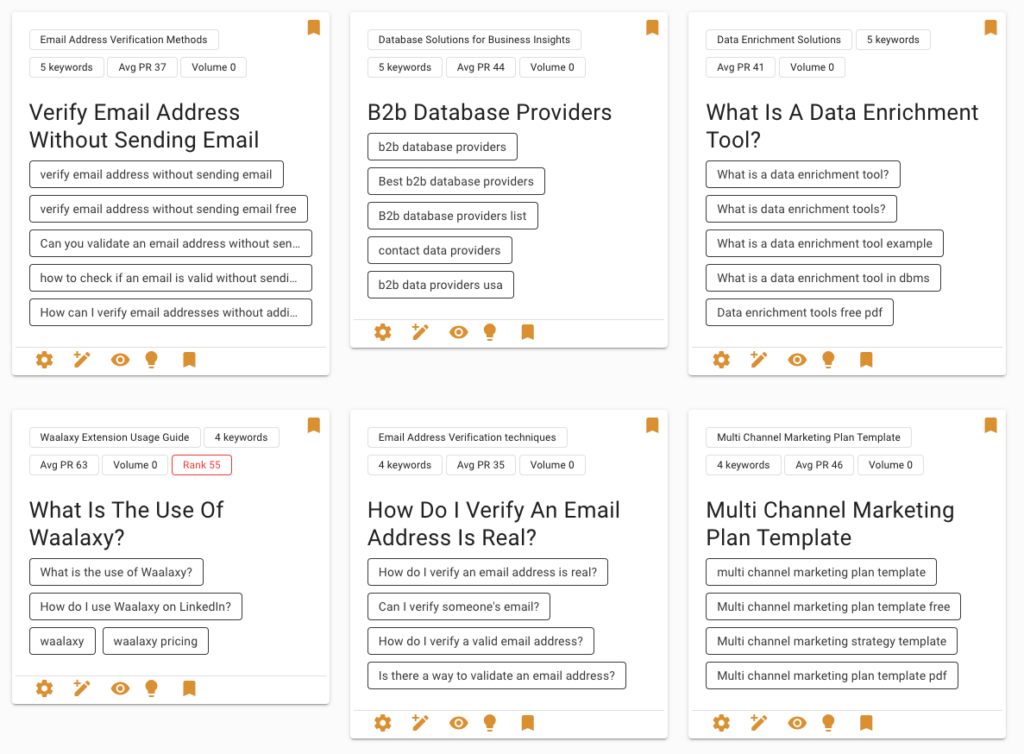
Cluster your first 500 keywords for Free
Organize your content for improved SEO and user experience with our Keyword Clustering and Topic Clusters feature.
Step 4: Creating a Content Plan and Mapping the Customer Journey
What is the outcome of grouping keywords? It highlights topics to focus on.
Remember, a topic cluster consists of a set of articles related to the main topic, with each article focusing on a specific aspect of that central topic.
Thanks to step 3 and the clustering of your keywords, we’ve identified topics for our cluster pages.
I recommend gathering relevant content ideas. You’ll notice that the tool has generated many keyword clusters, but not all will deserve a dedicated article.
Now, you need to filter through the list of keyword clusters and select the ones that resonate most with you and your business.
The thruuu keyword clustering tool UI is designed to be user-friendly. It offers ways to filter clusters based on competitiveness, size, or volume.
You choose the ones you prefer and mark them as favorites.

You’re developing a content plan and outlining your future articles.
I recommend covering the customer journey from start to finish.
Your goal is to be visible at different stages, ensuring your audience associates your brand with a potential solution.
So, when selecting your future articles, keep the content marketing funnel in mind and choose topics for each stage following this approach:
- Awareness: Educational content, such as “what is” or “FAQ” formats.
- Consideration: How-to guides and tutorials.
- Decision: Listicles with product reviews or comparisons.
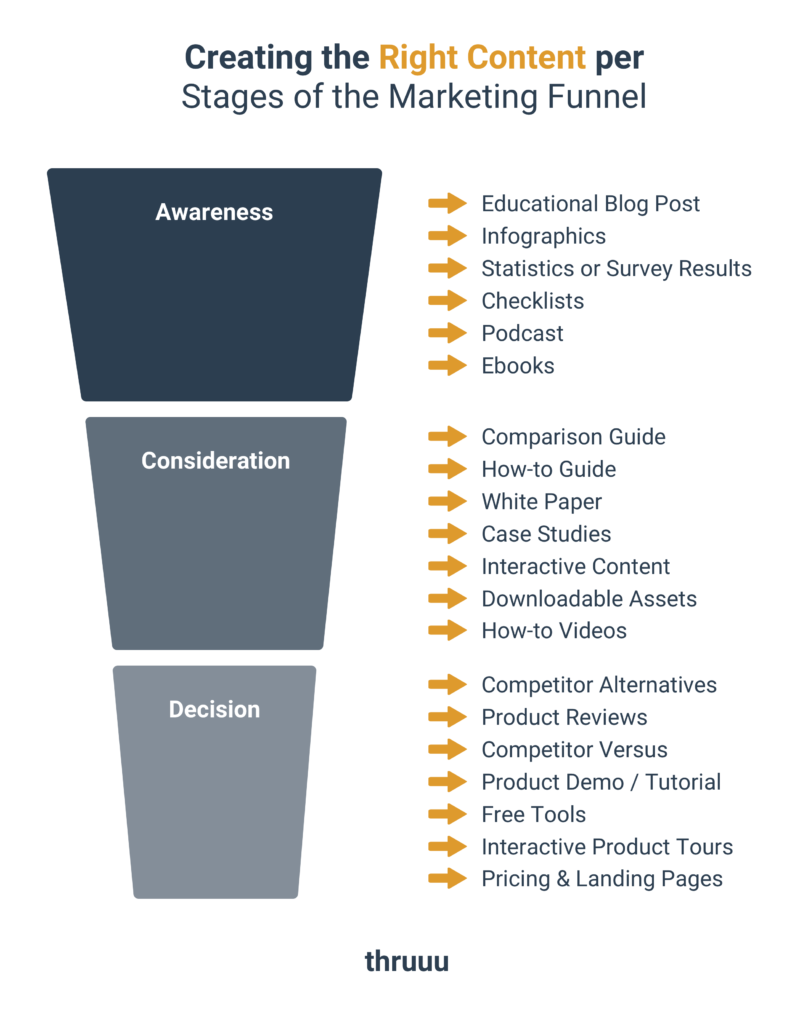
Step 5: Conduct Research and Create Expert Articles
While I assume you’re familiar with SEO copywriting, it’s still important to highlight some key aspects.
The success of your topic cluster depends on the quality of each article within it. Before creating content, ensure you conduct thorough research.
Being perceived as an authoritative source is essential, especially for B2B SaaS companies, and creating exceptional content boosts this perception.
But you should know this already…
By the way, you can utilize the thruuu SERP Analysis tool to streamline your research process.
This (awesome) tool is designed to gather extensive information about the top-ranking articles on the SERP (i.e., your competitors).
Our tool is tailored to help SEO Strategists and Copywriters by providing all the necessary information to make informed decisions.
With just a click, you’ll discover:
- Competitor insights and key metrics such as word count, image count, and domain authority.
- An overview of all headings and content outlines.
- The most frequently asked questions and topics covered by competitors.
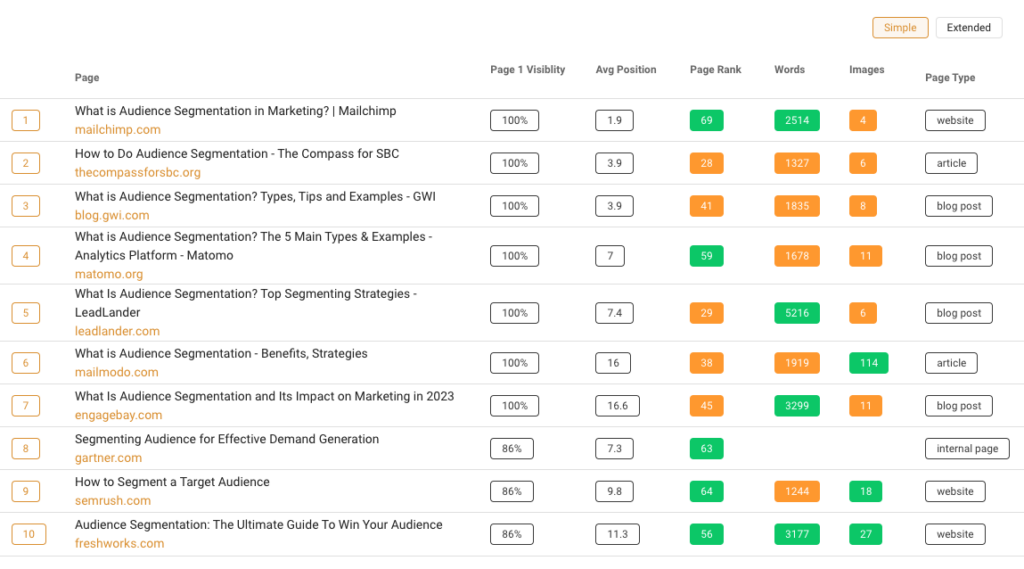
Moreover, if content briefs are an integral part of your workflow, the thruuu content brief generator can create comprehensive briefs in just a few clicks.
The content outline displays all competitor headings, aiding in creating content briefs supported by AI.
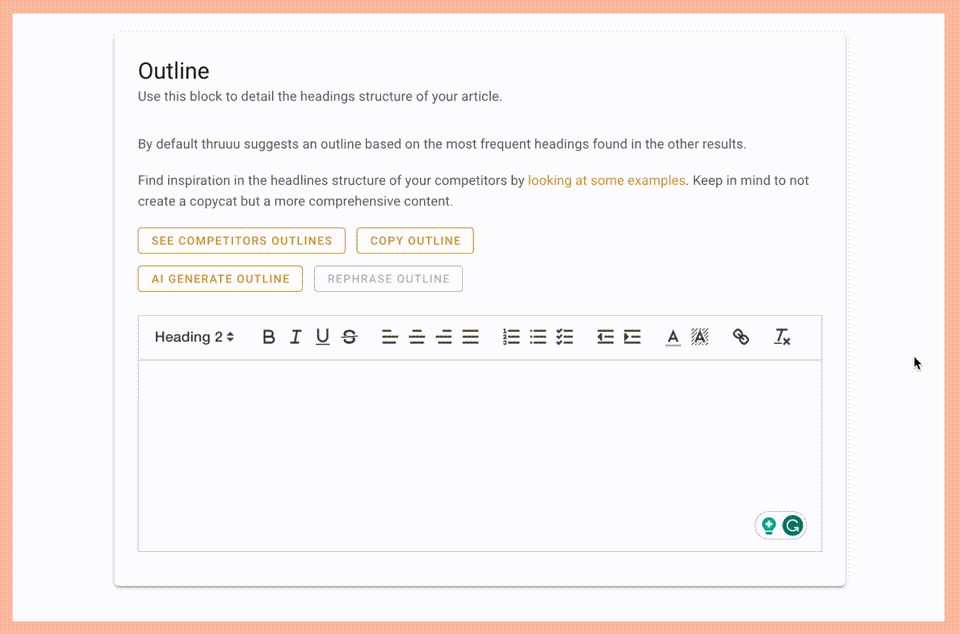
By the end of this step, you should have crafted several expert articles.
Step 6: Define a Pillar Page and Connect It to Your Cluster Pages
The coherence of a topic cluster is maintained through a pillar page.
The pillar page is like a home page. It targets your main topic and high-volume keywords.
There are several approaches you can adopt to structure this page effectively.
Here’s my recommendation:
Start by dedicating one or two sections to introduce the main topic. Explain what it is and address the central questions surrounding it.
Then, list all the cluster pages, aka subpages.
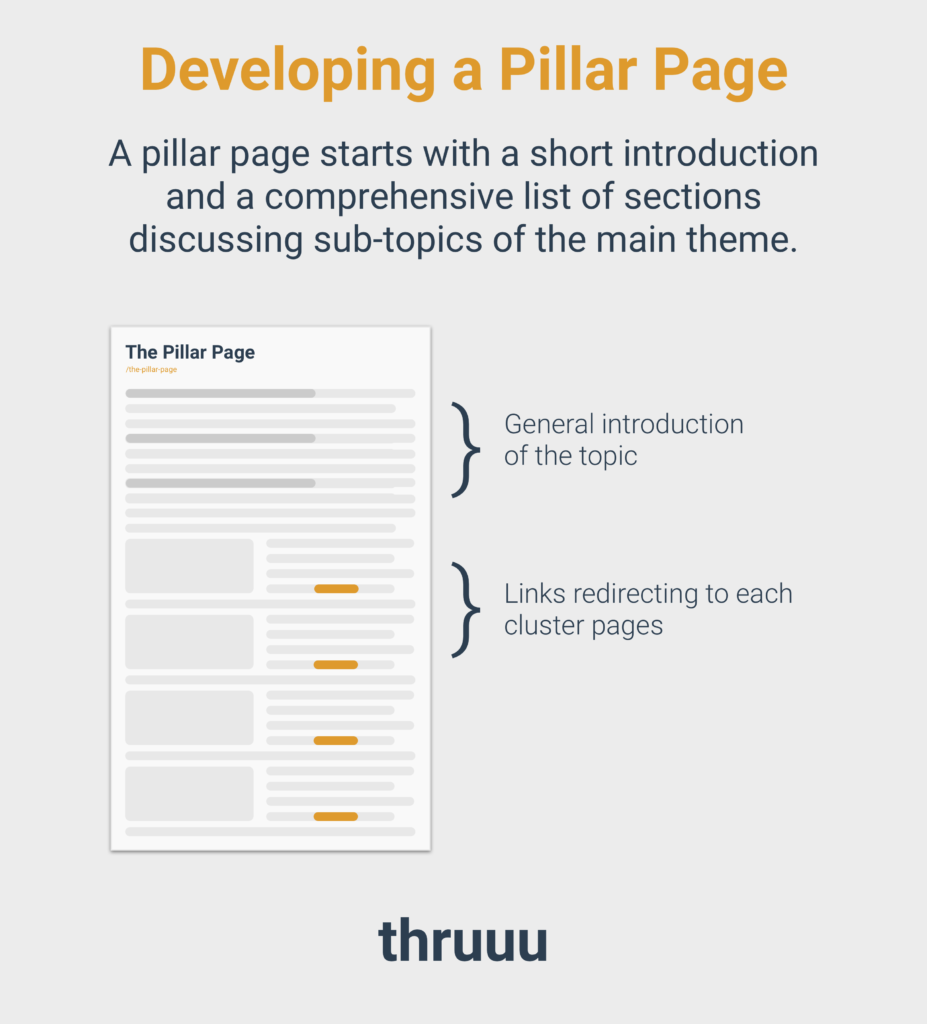
To offer more concrete examples of pillar pages, consider the following:
Here’s an extract from a pillar page on our website. It begins with a brief introduction, then lists every subpage, accompanied by a short paragraph to provide additional context.
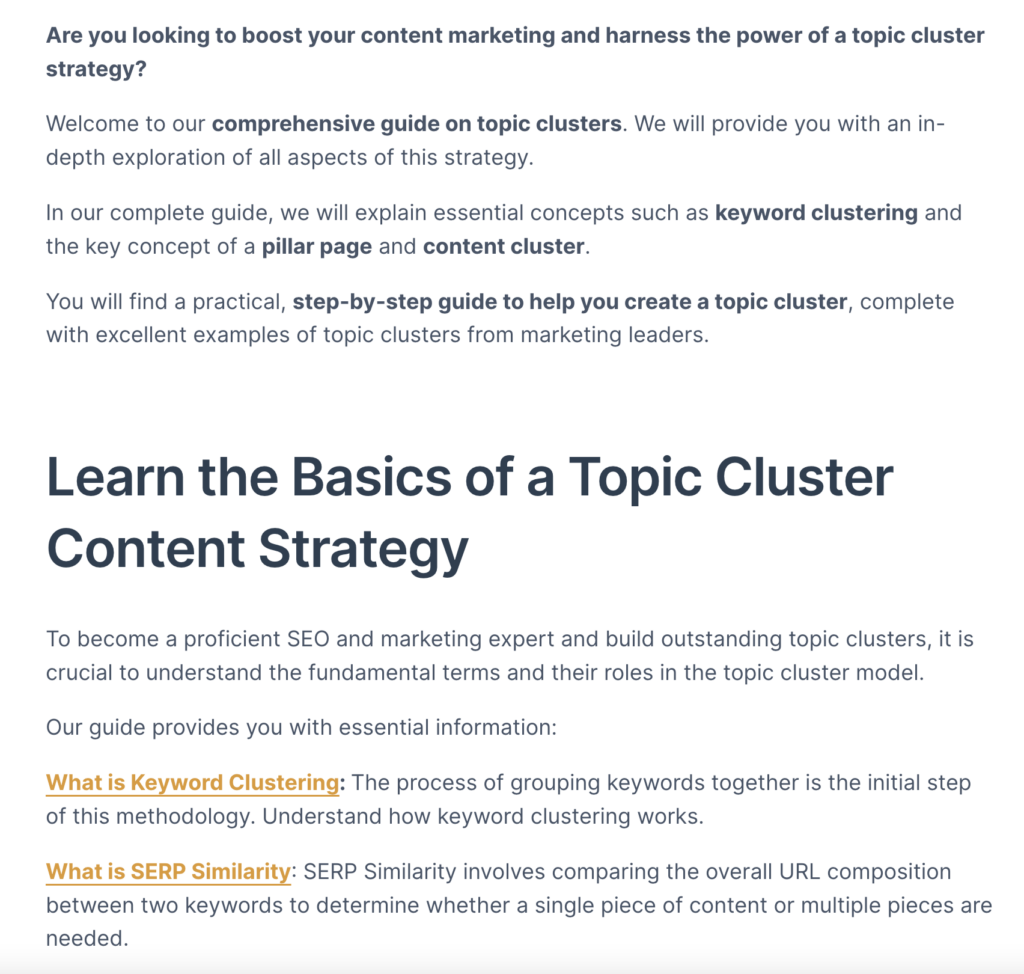
On the website backlinko, you can find several SEO content hubs.
Their pillar pages follow a similar structure, listing the subpages with little editorial content.
Find it here.
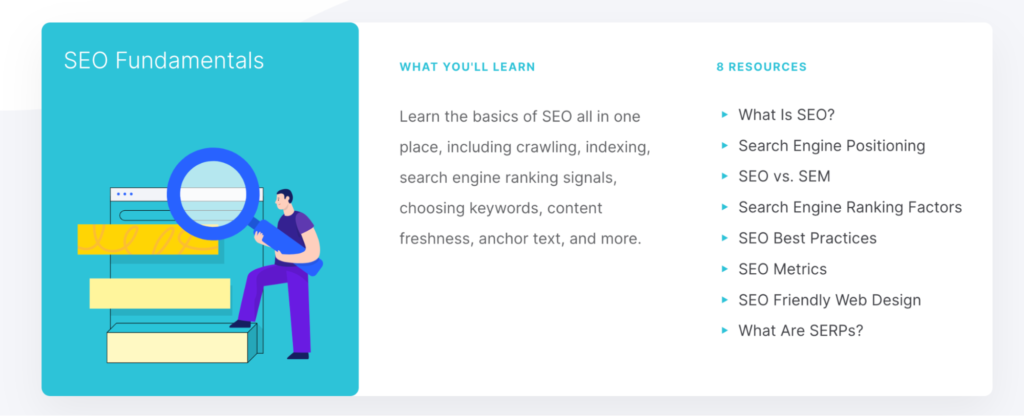
As explained, there are multiple methods to craft your pillar page.
It’s also crucial to align your pillar page with your website’s design and information architecture.
Step 7: Interlinking Content for Seamless User Experience
I cannot stress the importance of internal linking within a topic cluster more.
As previously discussed, your pillar page should link to all subpages.
This is the foundational rule: link from the pillar page to all cluster pages.
The second rule is to ensure every cluster page links back to the pillar page.
These simple guidelines will establish a coherent internal linking structure.
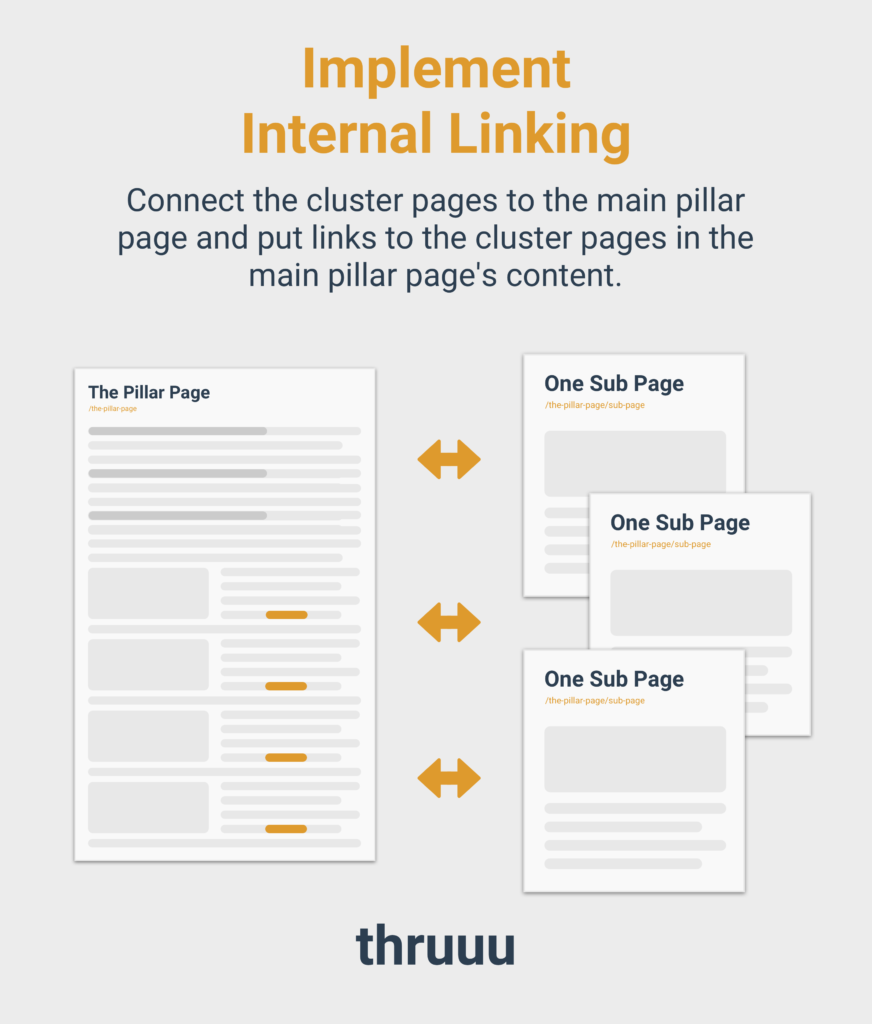
To enhance the user experience further, consider linking cluster pages to each other.
It’s prudent to insert links between pages where it naturally makes sense, guiding the user to relevant content.
Additionally, including a list of related content at the end of each page might be beneficial, encouraging further exploration.
Always keep the customer journey in mind, inviting users to deepen their understanding of the topic.
Below a great example.
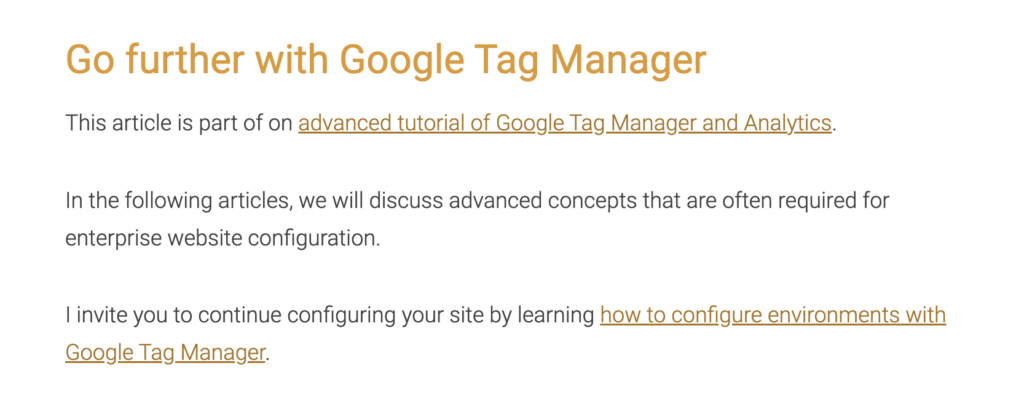
Pro Tips for Creating Topic Clusters for your SaaS
Having summarized the main steps for creating a topic cluster for your SaaS, let’s explore some practical tips to enhance your strategy further.
Start Small
A common question I got often is, “How many articles do I need in my topic cluster?“
There’s a widespread misconception that starting a topic cluster requires hundreds of pages.
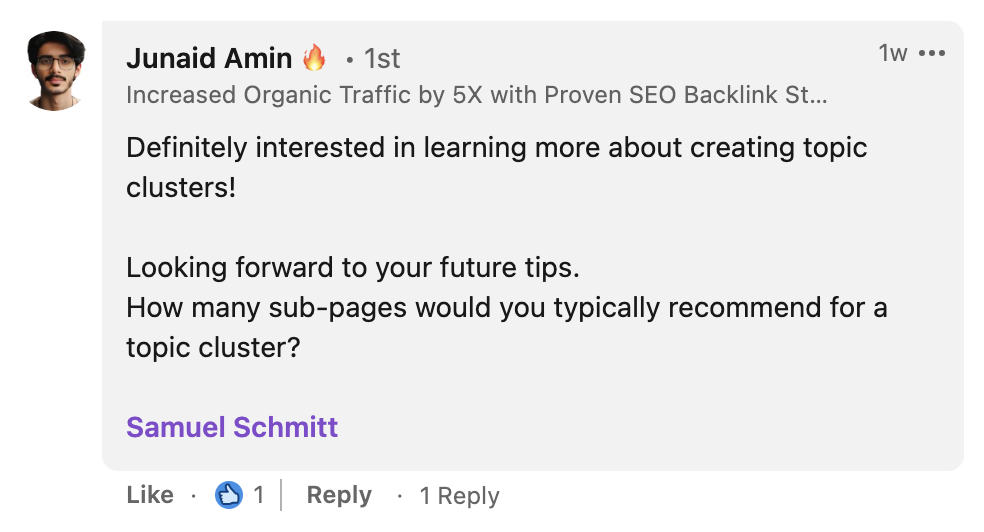
This belief is often fueled by SEO evangelists who advocate for generating AI content en masse, claiming that publishing hundreds of pieces simultaneously is the only way to make this strategy work.
This isn’t true. You can effectively begin with just a few articles.
You’ll need the pillar page and 3-4 articles linked to it.
For our own topic cluster on the topic cluster content strategy, we initially launched with just four articles. These were primarily the “what is” articles that explained the main concept.
Then, over time, we expanded our topic cluster by adding more articles.
Keeping Your Topic Cluster Up to Date
Maintaining the relevance of your topic cluster involves more than updating existing content; it requires adding new cluster pages to reflect emerging topics and trends.
A valuable strategy is to utilize Google Search Console regularly.
You can stay ahead of trends by exporting keywords associated with your cluster’s pages and analyzing them with a keyword grouping tool.
thruuu is particularly useful for identifying new potential clusters and areas where you’re already achieving good rankings.
As you can see below, the tool highlights topics where you rank and new topics to focus on.
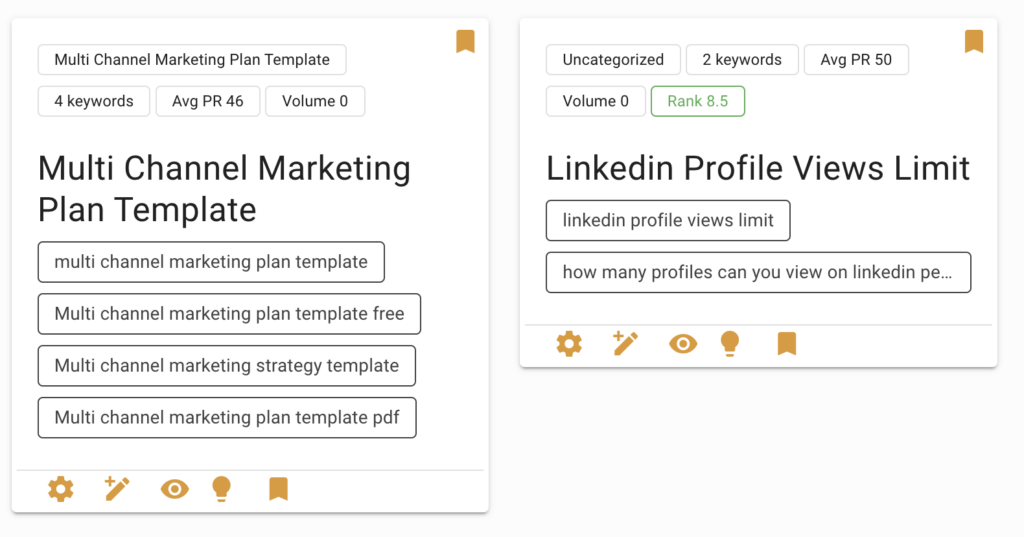
By selecting a few new topics from these insights, you’ll continuously have fresh articles to incorporate into your cluster, ensuring it remains comprehensive and up-to-date.
Structuring Your Topic Cluster in a Dedicated Website Section
Rather than using the blog to assemble a topic cluster, I recommend avoiding mixing pillar pages and cluster pages with blog posts.
Instead, I advise creating dedicated pages for the pillar and cluster pages within your website.
This method not only maintains a cleaner website structure but also simplifies hierarchical linking, following a pattern like this:
- example.com/pillar-page
- example.com/pillar-page/cluster-page-1
- example.com/pillar-page/cluster-page-2
- example.com/pillar-page/cluster-page-3
I prefer this approach as it offers a clearer view of the website’s architecture and facilitates reporting.
For example, suppose you want to extract all keywords related to your topic cluster from Google Search Console (and get new keywords to cluster).
You can input the URL of the pillar page to receive keywords for all associated subpages.
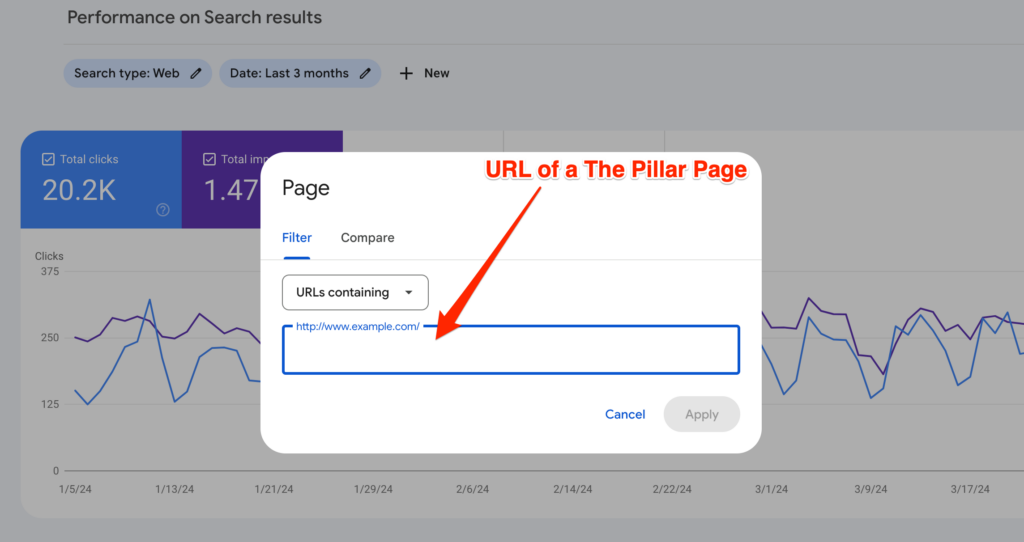
Regarding navigation, various strategies exist for incorporating your topic cluster into the website’s menu.
The primary options involve adding a new entry in your top navigation menu directly to the pillar page or linking from the footer.
Our website includes links to the pillar page from the top navigation menu and the footer, ensuring easy access for visitors.

Using CTAs to Link to Your Feature Page
The primary goal of developing a topic cluster is to guide users toward your key features, encouraging them to sign up for a trial or become customers.
Incorporating CTA (Call to Action) banners within your content is crucial. It’s an opportunity to highlight the benefits of your product while readers are engaged with your content.
By strategically placing CTAs that link directly to your feature pages, you enhance the user journey and create a seamless transition from information gathering to action taking.
Get Started with The Best Topic Cluster Tool
Our end-to-end content optimization solution empowers your team to crack the Google algorithm, craft exceptional content, and achieve remarkable organic search results.
Implementing Internal Linking Strategies Between Your Blog and Topic Cluster
While we’ve already discussed the importance of interlinking cluster pages and previously emphasized the importance of linking to your feature page via Calls to Action (CTAs), you can do more.
You can link your blog posts and cluster pages.
To uncover opportunities for link building within your existing content, try this simple method:
Conduct a Google search using the query: “site:yourwebsite.com + [a cluster page target keyword].”
The screenshot below illustrates how this search can reveal pages on your website that offer the potential for adding links to a cluster page.
Google even shows you the right spot (in bold) to include the link.
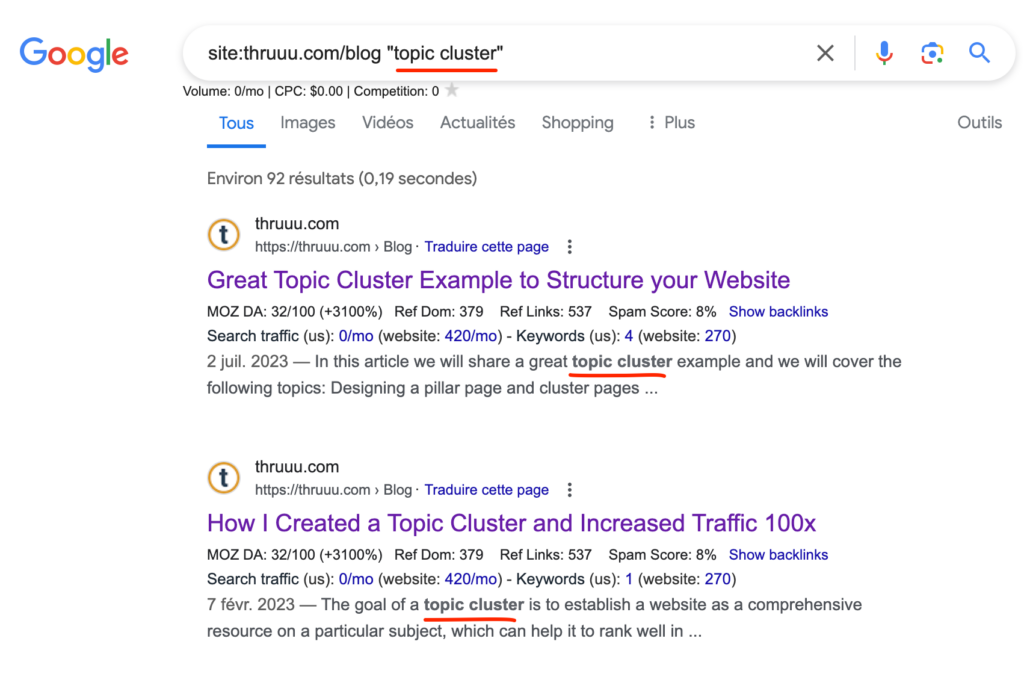
This approach strengthens the internal linking network within your site.
It helps guide readers from your blog to more detailed information within your topic clusters, enhancing your website’s overall cohesion and navigability.
Organizing “Similar” Topics in Content Clusters
This tip is a bit more complex but very important, so please pay attention.
When you’re working on grouping your keywords, sometimes you’ll find different clusters that seem very similar. This could lead to content that feels repetitive.
For example, when we were preparing our own topic cluster, we found two groups of keywords:
- Topic Cluster
- SEO Content Hub
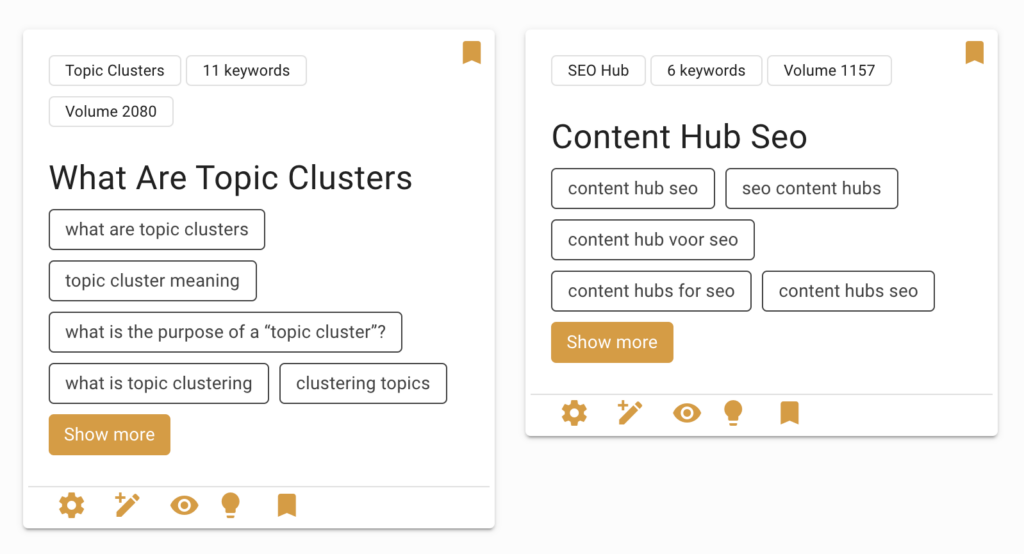
Though these two terms look like they’re about different things because they appear in different Google searches, they mean the same thing.
From a user experience perspective, it wouldn’t make sense to have two articles on our main pillar page: one on “What is a Topic Cluster?” and another on “What is an SEO Content Hub?” because they discuss the same concept.
Our strategy for closely related concepts is to write one article for the topic cluster, which gets a spot on the pillar page.
If there’s another concept that’s very similar but still requires a separate article, we post it on the blog.
This way, both articles are helpful. Some people might land on one or the other based on the query they entered in Google.
This approach reduces redundancy in your topic cluster and offers a better user experience.
I’ve told you this tip is a bit advanced. To illustrate what we discussed:
This article is on the blog.
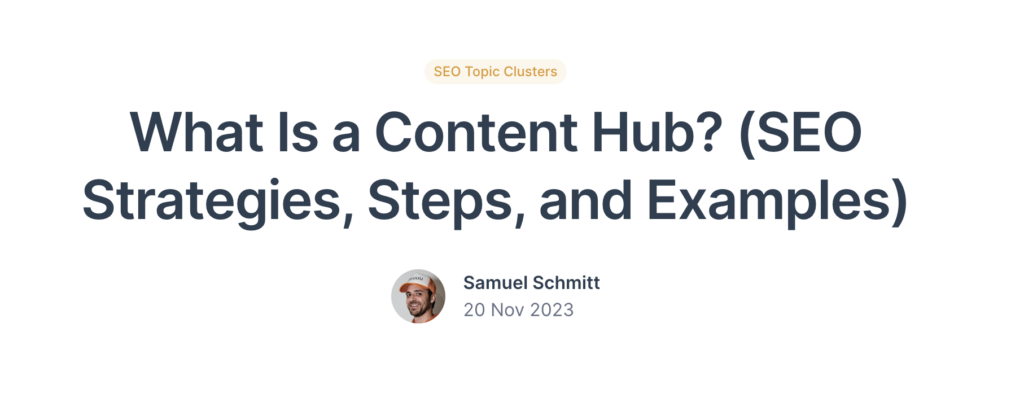
That one is a cluster page.
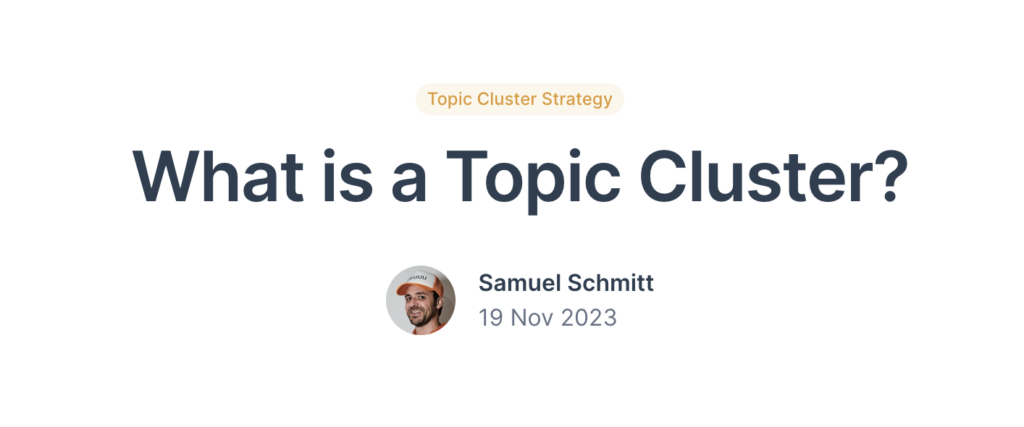
Checking Out Your Competitor’s Strategy
Here’s a pro tip using the thruuu keyword clustering tool to see what your competitors are up to.
Want to peek at your competitor’s content strategy? Just do this:
- Open the keyword clustering tool.
- Upload your keyword list from step 2.
- Type in a competitor’s website.
- Start the clustering.

Next, check out the PAGE tab in the tool.
You’ll see your competitors’ articles and the topics they rank for.
This lets you spot the themes and ideas they’re using. It’s a great way to validate your ideas and find new ones.
Try this with a few competitors to make your topic cluster even better. You’ll cover everything they do and more.
Below, you can see that we validated our list of keywords to understand what our competitors were discussing.
We were able to highlight what Ahref were saying about Topic Cluster.
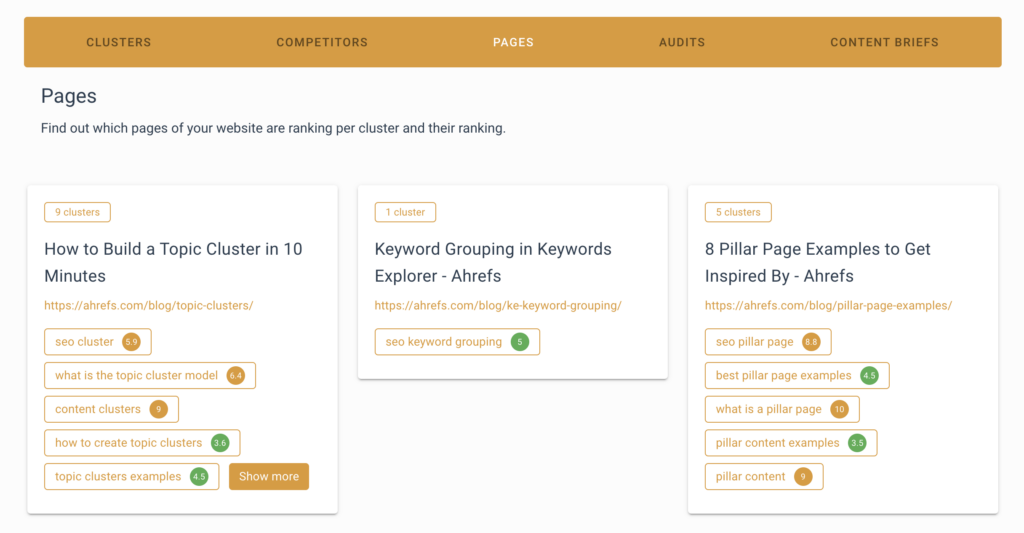
And here is another competitor, Terakeet, which created several articles on the topic.
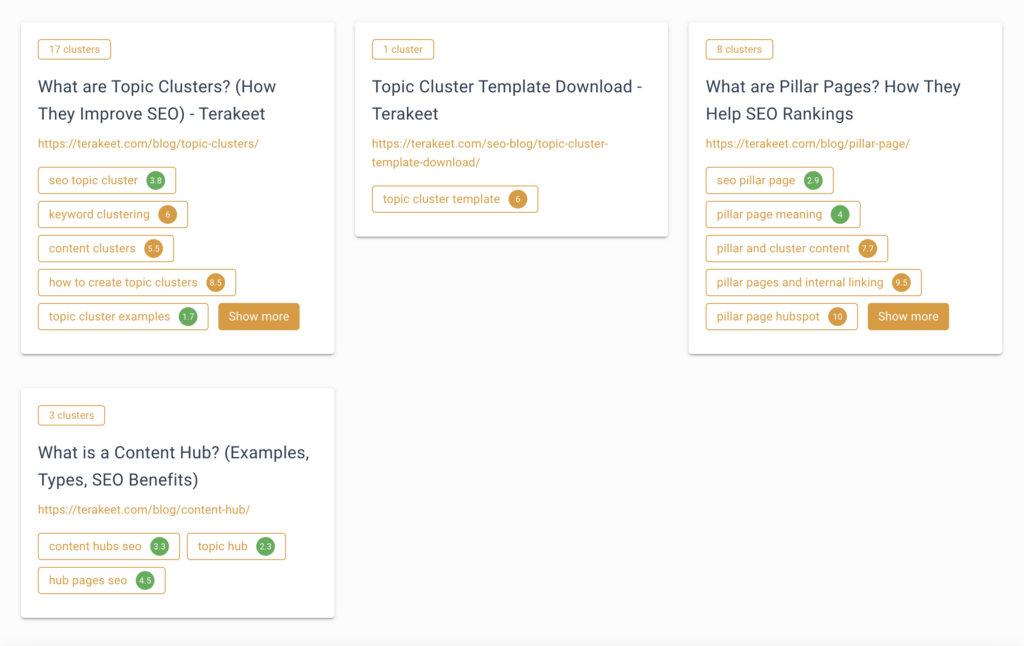
So you get the point.
We can check what our competitors are writing about to be sure to include these topics in our list of articles. Our goal is to be more complete than them.
Starting with an Existing Article
Here’s a brilliant tip for those ready to dive deeper.
If you’ve got a detailed article (like an “Ultimate Guide”) about a central topic or feature, you can use it to kickstart your topic cluster.
Call this your seed article.
Here’s how:
- Pull all the keywords from this article using Google Search Console.
- Run these through the clustering process.
You’ll end up with an extensive list of topics you can cover.
And guess what? This original article might work as your pillar page.
This tip is big enough to fill its own guide, so I recommend reading more about turning an existing article into a topic cluster.
Successful Topic Cluster Examples in SaaS
Example 1: Drift’s Chatbot Guide
Drift leverages chatbots for conversational marketing and sales, a critical feature of its platform and a popular search query among its audience.
They’ve crafted an impressive topic cluster centered on chatbots, with a comprehensive pillar page accessible at Drift Chatbot Guide.
The pillar page stands out for its depth and navigability, offering detailed content with internal links to subpages.
A sidebar navigation allows users to jump between articles within the cluster quickly.
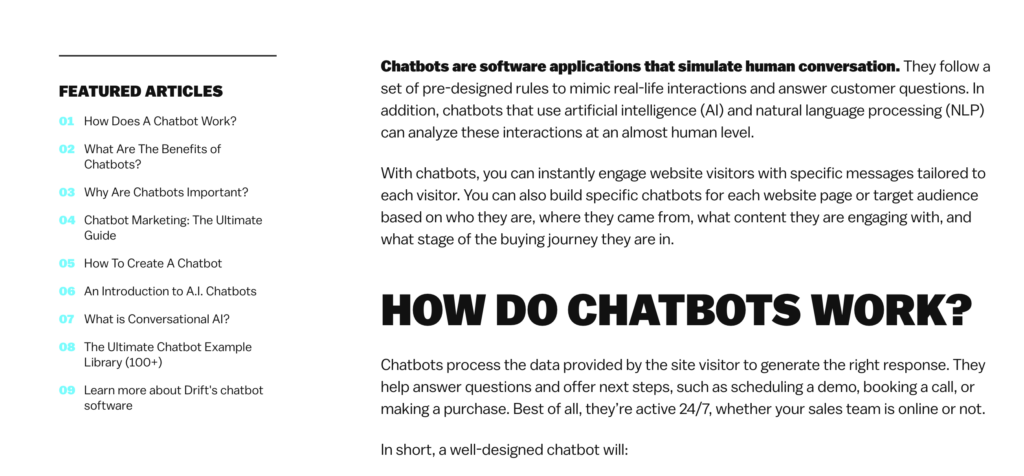
This structure guides users through the customer journey, from understanding how chatbots work to exploring their benefits, creating chatbots, and discovering specific examples before introducing Drift’s solutions.
Example 2: Sentisum’s Customer Service Analytics
Sentisum showcases another exemplary SaaS topic cluster, focusing on customer service analytics. Their cluster has pushed them to the top of Google for a highly competitive keyword.
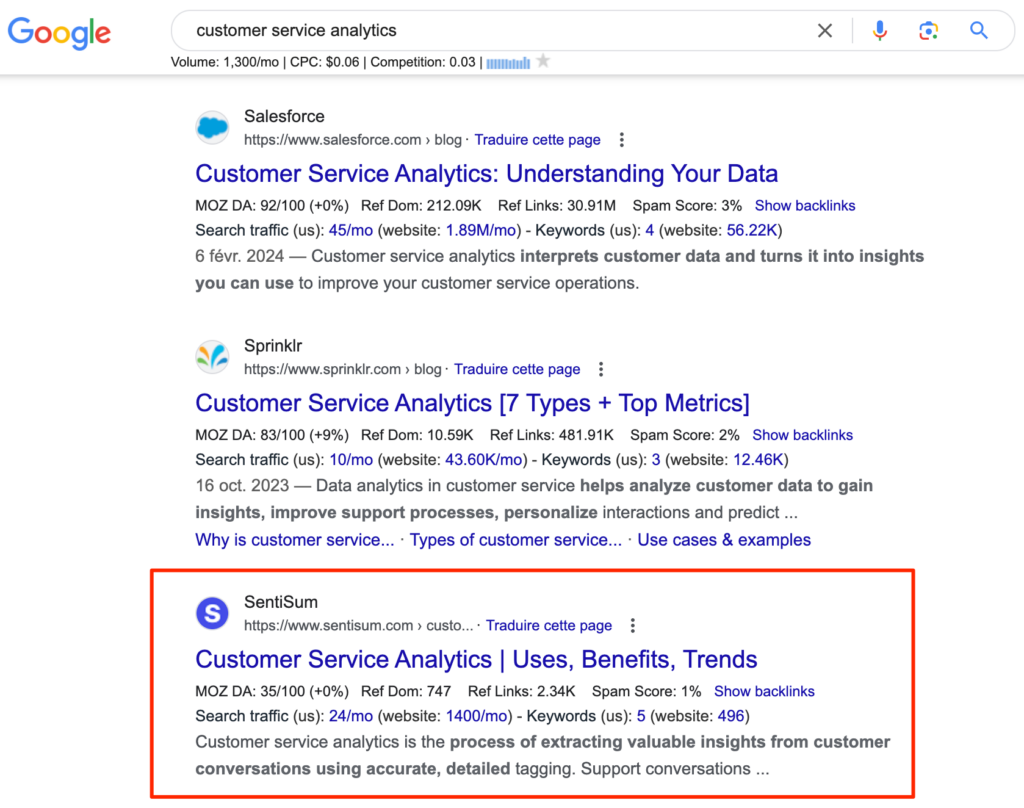
The cluster is outstanding for both the quality of its content and its user-friendly design. It includes a prominent navigation system that facilitates easy movement between interconnected topics.
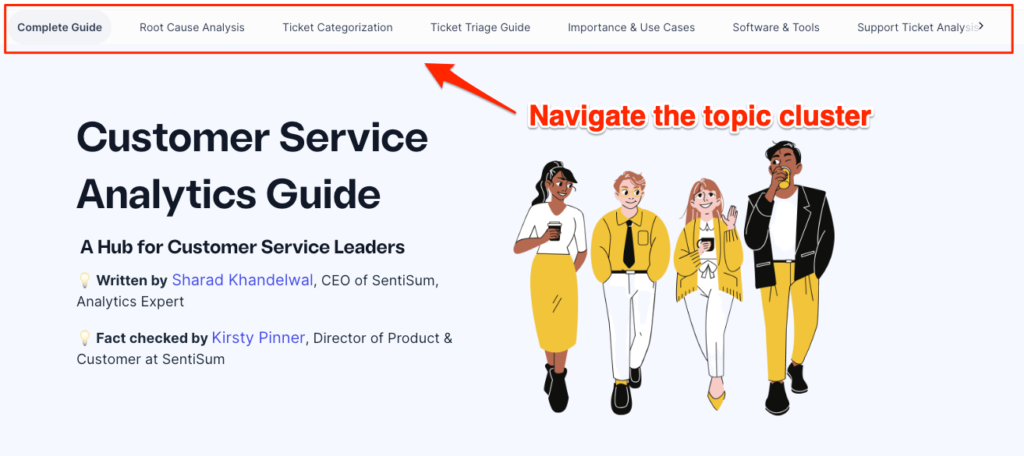
Read the complete review of this topic cluster example.
Benefits of Implementing Topic Clusters in SaaS
We are now reaching the end of this article.
If you are not yet convinced that Topic Clusters are one of the best SEO strategies for B2B SaaS, here are some benefits that I want to highlight:
Avoiding Content Cannibalization in Topic Clusters
By clustering your keywords based on SERP Data, you guarantee that your content won’t compete for the same searches and SERP positions.
This allows you to maximize your content production efforts and create the right number of articles.
Optimizing Linking Structures and User Experience
We have repeated this many times: internal linking is critical.
A topic cluster supports you in building links between your content and helps the user navigate from page to page.
Generating Organic Traffic and Improving Search Engine Rankings
Finally, your traffic and brand visibility on the SERP will be boosted if executed properly.
Users will see your brand at different stages of their journey. This might finally improve your conversion rate.
Now, it’s your turn. Start creating a topic cluster for your SaaS.
Empower Your Content Team
Our end-to-end content optimization solution empowers your team to crack the Google algorithm, craft exceptional content, and achieve remarkable organic search results.
